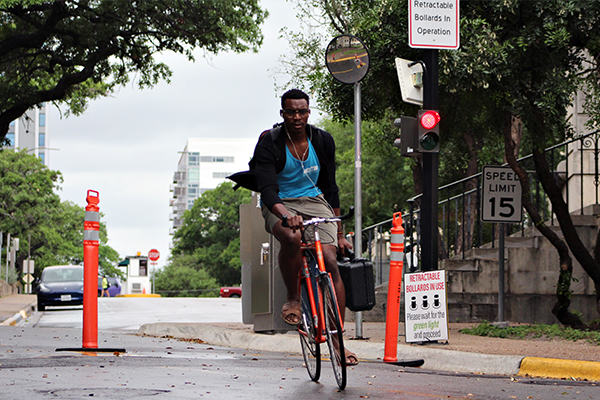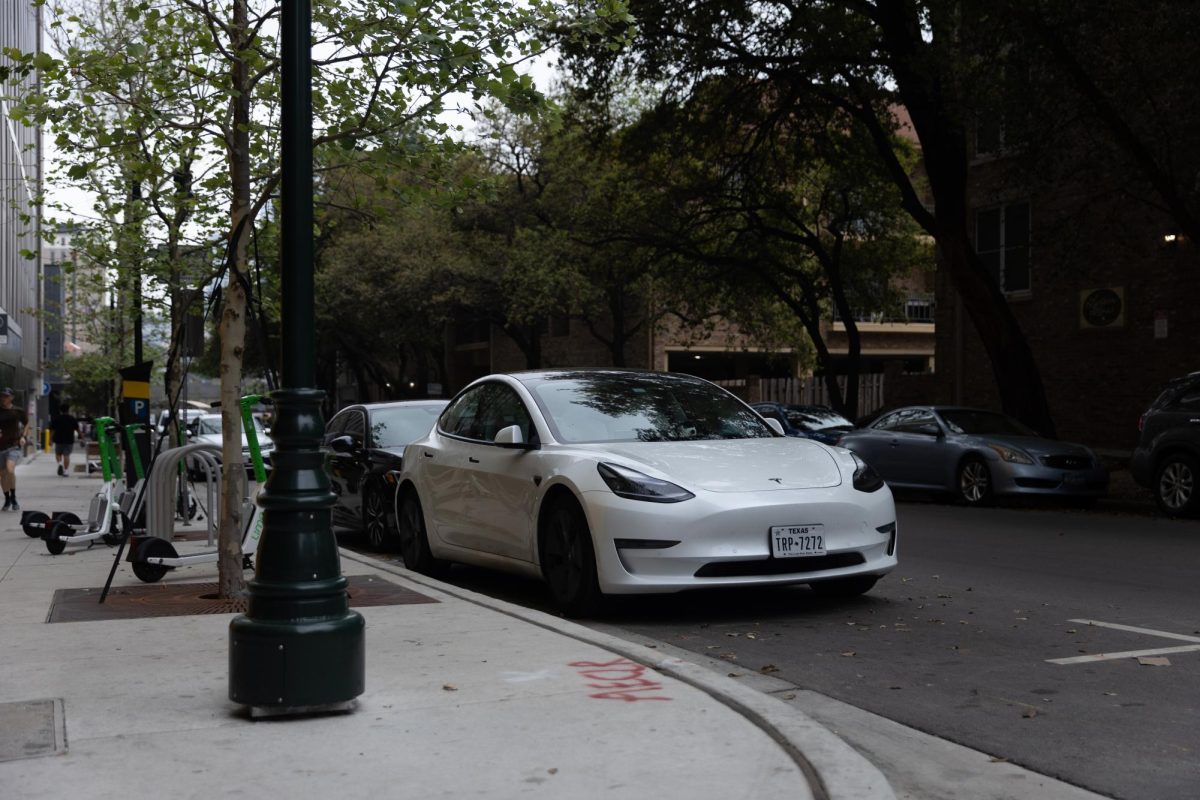Water damage and car collisions have caused the mechanical traffic bollards along Speedway Mall to frequently break down this semester. These traffic bollards carry a hefty price tag and can be expensive to repair.
These hydraulic-powered bollards, which are metal cylinders that raise and lower to control traffic, were added at 21st Street and Speedway and at 24th Street and Speedway in 2017.
Bobby Stone, director of UT Parking and Transportation Services, said they were initially subcontracted as a package for $291,838, including the cost of installation. Stone said the cost to repair the bollards varies based on the damage caused and can range from less than $1,000 to more than $20,000 per repair.
“(The bollards) were added to control vehicle access to the pedestrian-priority Speedway Mall,” Stone said in an email. “These bollards are typically raised, and they are spaced to allow bicycles and most carts to come through the intersection. They can be lowered to allow access for larger vehicles.”
Since the bollards have been installed, Stone said they have decreased the need for the parking attendants along San Jacinto Boulevard to control traffic into main campus. Because of this, Parking and Transportation Services decided to remove the parking attendants this spring and there is no plan to replace them at this time.
“The north and south kiosks on San Jacinto Boulevard were decommissioned and removed in early April,” Stone said. “The kiosk on DeLoss Dodds Way was decommissioned in August 2018 and also removed in April 2019.”
Architecture senior Erik Olivarez said he thinks the bollards are not effective at regulating traffic because of how often they break down. Even though they are replaced with cones, Olivarez said people can just move them.
“I feel like any car could just as easily drive past when they are broken,” Olivarez said. “I will sometimes see random cars that drive on Speedway, but I always assumed they were a part of some
construction project.”
Zachary Henry, a fine arts and radio-television-film sophomore, said he would like to see the University spend that money in other areas because it is costly to repair the bollards every time they are damaged or break down.
“I understand that safety on campus is extremely important, but at the same time, there’s more effective methods of regulating traffic that are much cheaper,” Henry said. “We could be using that money on things like expanding financial aid for underprivileged students or investing it back into different departments.”





















